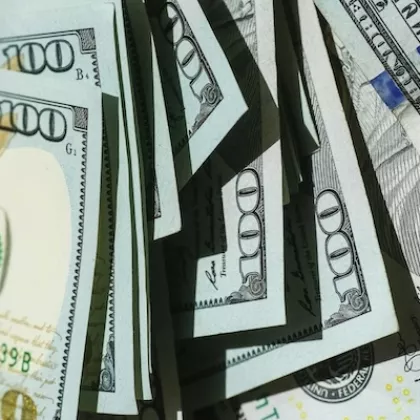Inside the use of non-fungible tokens (NFT) to sell collectibles

Inside the use of non-fungible tokens (NFT) to sell collectibles
May 26, 2021 | By Professor Derek Mohr
Sales of digital art, photographs, and digital texts are booming through the use of non-fungible tokens (“NFTs”) sold using cryptocurrency and recorded on a blockchain.
As the developer of a FinTech course at the Simon Business School, I am regularly asked what this all means: What do cryptocurrency, blockchain, and tokens have to do with digital art? And how can you sell a tweet? More fundamentally, even if someone is selling such a strange thing, why would anyone pay millions of dollars for it? In this blog post, I will use the recent NFT sale of the first tweet on Twitter for $2.9 million to illustrate the basic concepts of tokens, blockchain, and cryptocurrencies.
The origin of NFTs.
Businesses founded on blockchain ideas called their currency units “coins” following the first successful cryptocurrency, Bitcoin. But there are significant legal issues in the U.S. and many other countries with selling coins and using the proceeds to start or operate a business.
A big crackdown by the Securities and Exchange Commission against the sale of unregistered securities prompted companies to start calling their cryptocurrency “tokens” instead of coins. Because identical tokens could fall under the category of a security, companies created the NFT category to ensure that each token is completely different.
The $2.9 million tweet.
In March 2021, Twitter founder Jack Dorsey sold his first ever tweet as an NFT for $2.9 million. Putting aside the question of why someone would pay this much for a tweet, the details of how the NFT sale works are actually fairly straightforward.
The NFT sale all starts with a “blockchain” ledger that records history using a cryptographically secure “hash function.” The idea of the hash function is that it begins with a huge input file that contains millions of binary bits (each is either 0 or 1) and then it combines the bits in a pseudo-randomizing manner that results in a “unique” fixed-length output string (256 bits is the most common). The hash function will return the same result for the same exact input file, but if the input file is changed by just one bit, switching from 0 to 1, the resulting hash function will be completely changed.
Let’s apply this concept to digital art. If you take a digital photograph, you create a file that is several megabytes in size. Hashing this into a 256 bit string will then give you a unique signature. If someone were to make an imperfect copy of the art, it would hash to a completely different string, which proves that it is not the original. (Note: there is an infinitesimal chance that two input files have the same hash, as there are “only” about 1077 different 256 bit hash function results – but this number is so unbelievably large that it would take trillions of years with the highest available computing power to find two input files with the same 256 bit hash.)
The blockchain ledger is then created as a series of data blocks, each of which can be readable words, data, or images, that are all chained together using hash functions. In other words, if you take the hash of the first block and include this 256 hash as an entry in the second block, the resulting hash for the second block will depend, in part, on the data in the first block. Continuing forward, each new block’s hash result will depend on the entire history of all previous blocks. In this way, the history of blockchain transactions is permanent and unchangeable.
It's also important to note that the results of many blockchain implementations are made publicly available. Bitcoin and other cryptocurrencies have public blockchains where all transactions are recorded. Anyone with an internet connection can verify any of the individual block transactions.
After the March 2021 sale of Jack Dorsey’s first tweet, a startup company called Valuables by Cent set up its own blockchain to record sales of tweets. These sales are by auction at a website the company created (v.cent.co) and the blockchain is publicly available. All payments are required in Ether, the “coin” from the Ethereum cryptocurrency.
Currently, there are thousands of tweets available for auction at the site, and anyone can offer new tweets for auction as long they agree to terms that include Cent retaining 5% of sale proceeds as a commission. In many ways, Cent is a typical start-up company with an idea that brings something new to society while at the same time providing a profit to the company founders. What is new and confusing is that the implementation of this idea depends on NFTs sold using cryptocurrency and recorded on a blockchain.
As there is only one NFT that represents owning the first Twitter tweet, it is more difficult to argue that this is a security. (Note: this remains an unresolved area, because if the intent of the NFT sale is to start a market where they are frequently bought and sold, then perhaps this is a security after all).
Determining value.
Finally, we turn to the issue of valuation. In many parts of the collectible market, owning the first item produced has extra value. It’s also worth noting that unique items like famous paintings have extremely high value due to their rarity. On the other hand, some things start out appearing rare or special but are overproduced to the point where there is no longer rarity. Due to phases in consumer behavior, it is not clear at all that NFTs will retain the value initially paid. In fact, the number of NFTs listed for sale has exploded and there are many competing places to sell your NFT due to the lack of barriers to entry in the cryptocurrency/blockchain space.
One explanation for the large values paid for NFTs initially is that this is a form of advertising. As the modern business economy depends more and more heavily on clicks and eyeballs, it may be that shocking events in the new FinTech space are necessary to attract attention among thousands of competitors. It’s not surprising that many of the big buyers of NFTs are all longtime members of the cryptocurrency/FinTech business space.
Summing it up.
Whether they are called coins or tokens, the units traded and recorded on blockchain have many uses, thanks to the permanent nature of blockchain. Cryptographic hashing and the blockchain create an environment where the owner of a piece of art can now be recorded publicly and permanently.
In the world of collectables with owners recorded on a public blockchain, everyone can see who the true owner is, and stolen goods will be hard to sell. For example, an artist can create a limited series of 100 copies of a painting, and each owner can be recorded on the blockchain for the world to see. If you are considering buying the art, you can then verify the identity of the current owner and ensure your name is listed on the blockchain as the new owner if you make a purchase. And don’t worry about anonymity – if you do not want to use your name publicly, you can use a 256 bit hash of your name as the registered owner.
Without question, cryptocurrency and blockchain will continue to push the bounds of modern commerce. At Simon, we are proud to offer a course at both the graduate and undergraduate level to explore blockchain, cryptocurrencies, decentralized finance, and the myriad of ways companies are implementing these technologies so that our students are prepared to navigate the ever-shifting landscape of Finance Technology.
Follow the Dean’s Corner blog for more expert commentary on timely topics in business, economics, policy, and management education.

Derek Mohr is a Clinical Associate Professor and Faculty Director for the MS Program in Finance at the Simon Business School.
To view other blogs in this series visit the Dean's Corner Main Page











